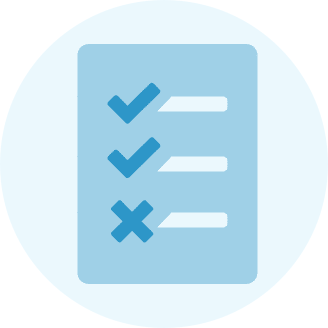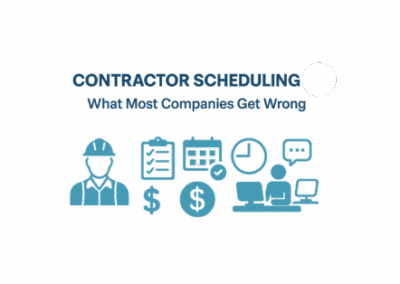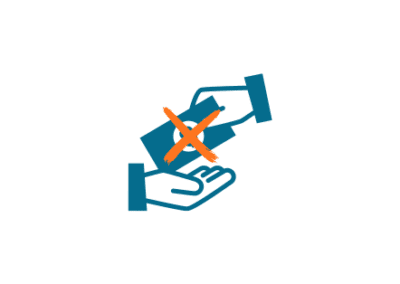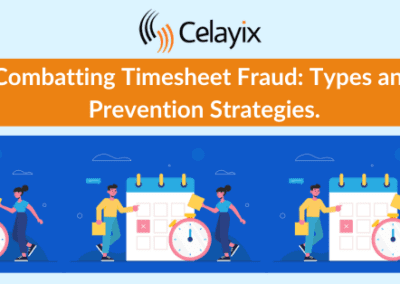Do you manage a workforce that works out in the field? Do you have processes in place to ensure that all tasks are completed, without having to be present to verify? That’s where shift tasks and field reporting comes in. From maintaining productivity to ensuring accountability, these features have a wide range of benefits to any manager handling a mobile workforce.

There are several industries that can benefit from using shift tasks and field reporting. Any industry with a mobile workforce, such as security guards, home healthcare providers, cleaning companies, and more.
Why use Shift Tasks and Field Reporting?
As mentioned above, a wide range of benefits come from assigning shift tasks and using field reporting.
Management stays in the loop
The first, and likely most important benefit of using shift tasks and field reporting is that it allows managers to stay in the know at all times. Whether they are working from head office, or away on business, managers can check on the status of tasks from any device. Managers can see in real-time as tasks are completed, viewing timestamps and signatures to verify them.
Maintain Productivity
Managing mobile workers is not always easy. It takes a great deal of trust and communication to ensure that the required work is completed without the presence of management. Shift tasks and field reporting allow management to communicate clearly the necessary tasks that need to be completed for each shift. This provides clarity to employees on what they need to achieve and also helps management to maintain productivity levels.
Ensure Accountability
Another obstacle to overcome when managing a mobile workforce is the idea of accountability. Without being physically present, it can be difficult to keep track of employee activity. By using shift tasks and field reporting, managers can assign tasks to employees, and ensure they get completed. In fact, managers can even request for all tasks to be completed before employees can check out of their shift.
Employee Motivation
The great thing about shift tasks is that while management can see task progress, so can employees. For the most part, people enjoy making their way through a to-do list. Employees will see their task list once they check-in, and from then, can start checking them off. By having a clear idea of their goals for the day, employees are driven to get to the end of their list. Throughout the day, as they see tasks checked off, they will feel rewarded, and be motivated to continue working through them.
Improved Client Satisfaction
Finally, with shift tasks, employers can provide a list of the tasks completed to clients. This will reassure clients that the necessary work is being done, and allow them to see the range of work being completed. Remove any doubts from your client’s minds, and have a paper trail to fall back on in case of any doubts from clients.
Field Reporting
While we have focused pretty heavily on shift tasks, there is also a wide range of uses for field reporting. Without a manager present on-site, important updates can be missed or simply miscommunicated due to a lack of appropriate tools. The ability for employees to report back to management from the field is a huge benefit to most organizations.
Provide incident reports
In the event of an incident or accident at a worksite, management will certainly want to know, right? Unless there are appropriate rules and processes and places around this, reports may not be made. With Field Reporting, employees simply need to go to their mobile app and generate a report that details everything that management needs to know. These reports will generate a timestamp, so management can see the timeline of events. Making this easy and accessible for the employee is the first priority, and exactly what field reporting does.
Capture photo and video reports
Management might require a photo or video report from a shift, depending on the type of work being carried out. This is often used in the Security industry, to provide proof that a site has been secured as required. Photos and videos can also be used in incident reports mentioned above, again providing vital information to management.
Managers can view field reports from any device as soon as they are generated. These can be exported as required, and provided to clients as needed. This is also a great way to gain a competitive advantage while trying to attract new clients. For a lot of organizations, trust and transparency are areas of weakness. Field reporting and shift tasks mitigate these weaknesses and provide reassurance to clients when they need it most.
EVV (Electronic Visit Verification)

If you are a Home Healthcare organization, you’ve heard of EVV, and the requirements from the mandate. Shift tasks and field reporting capture all of the necessary information for EVV data exports and can create the file exactly as you need it. Home healthcare providers can use shift tasks to ensure every patient receives the same level of care. Field reporting can then be used to record any other important information from each visit.
Celayix has worked hard to develop shift tasks and field reporting to be beneficial to employers, and accessible to employees. With easy access directly from the Celayix mobile app, these tools are simple to use and allow employees to sign off on tasks. Echoing back to the importance of a paper trail, Celayix will keep a record of these shift tasks and field reports so you don’t have to. If you’d like to hear more about how Celayix can help your workforce to manage tasks and communicate with management, reach out to one of our Solution Advisors today.




